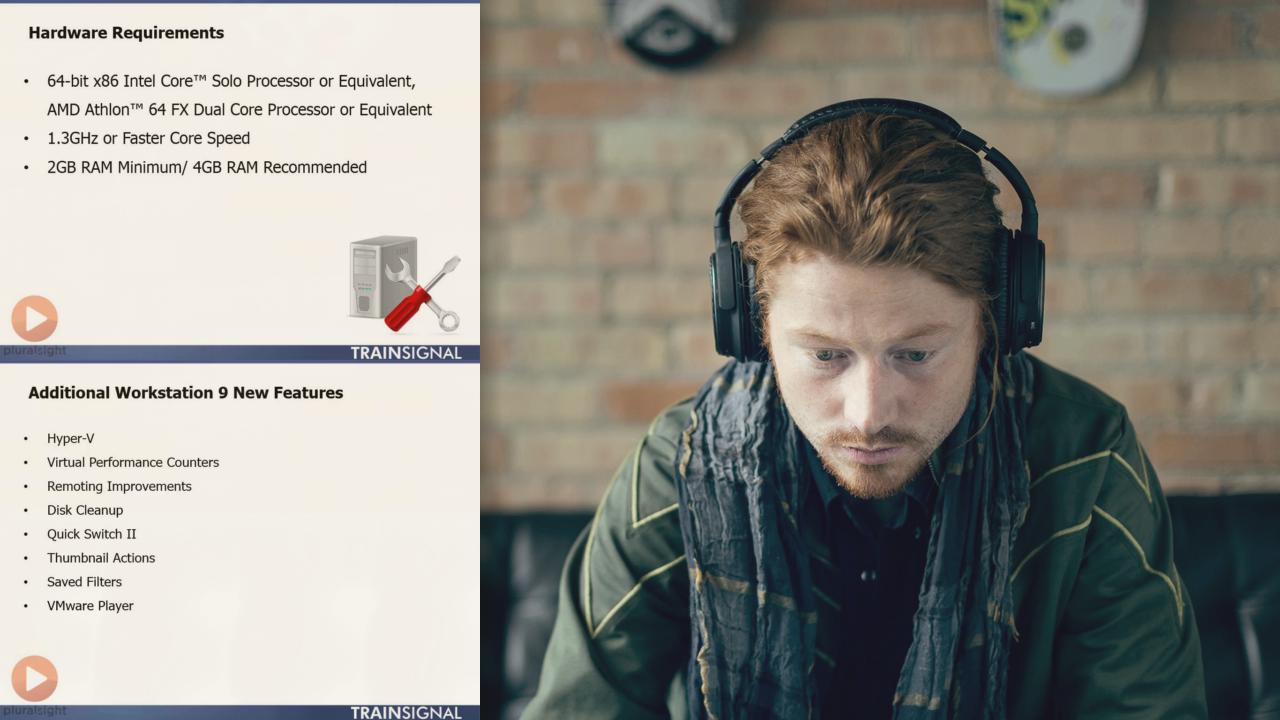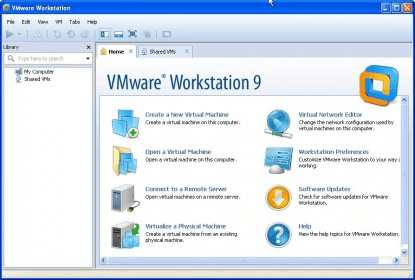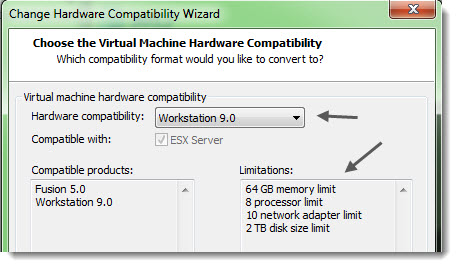Still some Windows machines already automaticly installed the update, without user interaction! This update cuts the network interface briefly, but long enough for causing client disconnects for hundreds of users. Starting this morning 4/24/2019 I am seeing 'VMware, Inc. Net - 12:00:00 AM - 1.8.10.0' appearing in Windows Update for. Install Acronis Backup for VMware 9. Change root password. Add ESX (i) host. Perform bare metal recovery of ESXi hosts.
VMware Telco Cloud Automation 1.9.5 | 05 AUG 2021 | ISO Build 18379906 | R147 Check for additions and updates to these release notes. |
What's New
Airgap Support: True support for a complete air-gapped environment.
You can now create an air-gapped server that serves as a repository for all binaries and libraries that are required by VMware Telco Cloud Automation and VMware Tanzu Kubernetes Grid for performing end-to-end operations.
In an air-gapped environment, you can now:

- Deploy VMware Tanzu Kubernetes Grid clusters.
- Perform late-binding operations.
- Perform license upgrades.

The airgap setup requires packages to be placed in a private air-gapped repository. To keep the packages up to date and to manage the repository, it must have access to the Internet.
CSI Zoning Support
VMware vSphere-CSI is now multi-zone and region aware (based on VMware vCenter tags).
In a default vanilla Tanzu Kubernetes Grid (TKG) cluster, you cannot use vSphere CSI, if there is no shared storage across the whole cluster. Thus, creating a limitation for a Stretched cluster deployment. As a result, VMware Telco Cloud Automation 1.9.5 supports a zoning feature. The feature to enable zoning allows an operator to dynamically provision Persistent Volumes through vSphere CSI, even in a cluster with no shared storage available.
Intel Mount Bryce Acceleration Card Support
VMware Telco Cloud Automation 1.9.5 now supports Intel’s Mount Bryce driver. Mount Bryce exposes accelerator functionality as a virtual function (VF), so that multiple DUs can use these VFs for Forward Error Correction (FEC) offload. FEC in the physical layer provides hardware acceleration by liberating compute resources for RAN (both CU & DU) workloads. The FEC acceleration device utilizes the SR-IOV feature of PCIe to support up to 16 VFs.
VMware Telco Cloud Automation 1.9.5 automates the configuration of the VF so RAN ISVs can consume it.
Cache Allocation Technology (CAT) Support
VMware Telco Cloud Automation 1.9.5 addresses certain DU requirements through its CAT support. CAT support allocates resource capacity in the Last Level Cache (LLC) based on the class of service. This capability prevents a single DU from consuming all available resources. As such, with CAT the LLC can be divided between multiple DUs. VMware Telco Cloud Automation 1.9.5 automates the configuration at the ESXi layer to provide CAT support to RAN ISVs, to enable them to deploy multiple DUs.
VMware Telco Cloud Automation 1.9.5 includes support for:
- VMware Tanzu Kubernetes Grid version 1.3.1
- VMware NSX-T Data Center 3.1.2
Important Notes
vSphere CSI Multi-Zone Support Notes
- Multi-zone feature works on the workload cluster created from the newly created Management cluster.
- Multi-zone DAY-1 configuration is not supported on an existing Kubernetes cluster that is upgraded from previous VMware Telco Cloud Automation versions. It is also not supported on a newly created workload cluster from a Management cluster that is upgraded from a previous VMware Telco Cloud Automation version.
- When you Upgrade from a previous version with multi-zone enabled manually, the configuration is reserved. However, the VMware Telco Cloud Automation UI or API does not support disabling and enabling the multi-zone feature.
Vmware 99
Airgap Notes

- The air-gap solution in 1.9.5 only works in a restricted Internet-accessing environment with DNS service, so that the clusters can resolve the address of the air-gap server.
- Configure the workload cluster with air-gap settings that are similar to its related Management cluster. VMware Telco Cloud Automation does not validate these settings. However, workload cluster deployment fails if the air-gap settings on the Workload cluster and the Management cluster are different.
- The air-gap server works only on a newly deployed Kubernetes cluster, or on a Management cluster that is deployed on a newly deployed Kubernetes cluster. The air-gap server does not work on existing Kubernetes clusters that are upgraded from previous VMware Telco Cloud Automation versions. It also does not work on workload clusters deployed on existing Management clusters that are upgraded from previous VMware Telco Cloud Automation versions.
- To deploy a Management cluster, the VMware Telco Cloud Automation Control Plane must be able to access the air-gap server that is set to the Management cluster.
Helm addon version Notes
- VMware Telco Cloud Automation CaaS supports only Helm v2.17 and v3.5.
- VMware Telco Cloud Automation API to install any 2.x Helm version is now obsolete. However, the VMware Telco Cloud Automation UI does not contain any changes.
Kubernetes Version 1.17 Discontinuation
- VMware Telco Cloud Automation, along with VMware Tanzu Kubernetes Grid, have discontinued support for Kubernetes Management and Workload Clusters with version 1.17.
- It is mandatory to upgrade any 1.17 Kubernetes clusters to a newer version after upgrading to VMware Telco Cloud Automation 1.9.5.
Vmware 9 32-bit
Download Photon BYOI Templates for VMware Tanzu Kubernetes Grid
To download Photon BYOI templates, perform the following steps:
- Go to the VMware Customer Connect site at www.my.vmware.com.
- From the top menu, select Products and Accounts > All Products.
- In the All Downloads page, scroll down to VMware Telco Cloud Automation and click View Download Components.
- In the Download VMware Telco Cloud Automation page, ensure that the version selected is 1.9.
- Against VMware Telco Cloud Automation 1.9.5, click Go To Downloads.
- Click the Drivers & Tools tab.
- Expand the category VMware Telco Cloud Automation 1.9.5 Photon BYOI Templates for TKG.
- Against Photon BYOI Templates for VMware Tanzu Kubernetes Grid 1.3.1, click Go To Downloads.
- In the Download Product page, download the appropriate Photon BYOI template.

Resolved Issues

CNF Lifecycle Management
Workflow outputs are not displayed for CNF upgrades.
If a CNF contains pre or post CNF upgrade workflows, the output of these workflows are not displayed within the CNF upgrade task.
A multi-chart CNF instantiation might fail for the second chart when the same namespace is used for all the helm charts.
This issue is noticed when instantiating a CNF that has multiple charts.
VIM
Hitomi yaida candlize rar. Re-registration of vCenter VIM ends up with the VIM status as 'Unavailable'.
When you deregister and reregister a vCenter VIM that has some CaaS clusters deployed on it previously, the VIM changes to the 'Unavailable' state permanently.
Known Issues
Infrastructure Automation
The CSI tagging is applicable only for newly added hosts in a Cell Site Group.
The VMware vSphere server Container Storage Interface (CSI) tagging is applicable only on the newly added hosts for a Cell Site Group (CSG).
This restriction is not applicable to the hosts already added to a Cell Site Group.
Manipulation card game rules. CSI tagging is not enabled by default for an air-gapped environment with the standalone mode of activation
The CSI tagging is not enabled by default for an Air-gapped environment that has a standalone mode of license activation.
Contact VMware support team for enabling the CSI tagging feature.
No option to edit or remove of CSI tagging after you enable the CSI tagging.
Once you set the CSI tags a domain, you cannot make further modifications or remove the tags.
User needs to edit and save domain information, to enable the CSI tagging feature upon resync, in the case of the brownfield deployment scenario.
To use the CSI feature in the case of a Brownfield deployment, the user needs to edit and save the domain information, and then perform a resync operation for that particular domain.
CSI tagging is not supported for predeployed domains.
CSI tagging feature is not applicable for predeployed domains.
However, VMware Telco Cloud Automation does not modify the existing tags if already set in the underlying VMware vSphere server for the predeployed domains.
Failure to provision domain when 4 PNICs are configured.
Telco Cloud Automation fails to provision domains when 4 PNICs are configured on a DVS and edge cluster deployment is enabled.
No option to delete a compute cluster that is 'ENABLED' but in the 'failed' state.
If the compute cluster is 'ENABLED' but in 'failed' state and the user attempts to delete the cluster, the same gets deleted from Telco Cloud Automation inventory leaving behind the cluster resources intact. The user has to manually delete cluster resources by logging into VMware Center server and VMware NSX-T server.
Manually delete cluster resources by logging into VMware Center server and VMware NSX-T server.
A config spec JSON from one Telco Cloud Automation setup does not work in other Telco Cloud Automation setups.
As part of the security requirement, the downloaded config spec JSON file does not include appliance passwords. Customers cannot use the downloaded config spec JSON from one Telco Cloud Automation setup and then try to upload that to another Telco Cloud Automation.
Need to regenerate the self-signed certificate on all the hosts.
Cloudbuilder 4.2 has a behavior change, that requires the user to regenerate the self-signed certificate on all the hosts. For details, see Cloud Builder.
Need to support add vsan nfs image URL in the images list
Before 1.9.5, the Telco Cloud Automation obtained the vSAN NFS OVF from https://download3.vmware.com. However, with the introduction of airgap server, the Telco Cloud Automation cannot obtain the vSAN NFS OVF from https://download3.vmware.com
- Provide the link of vSAN NFS OVF file URL under the Images section of Configuration tab in Infrastructure Automation. Provide only the OVF url, else the installation may fail.
- Check the Manual Approach and upload the required images to the image server. For details on required files, see vSAN Manual Approach.
Cluster Automation
CaaS Cluster creation fails when the cluster is connected to an NSX segment that spans multiple DVS
Cluster creation fails when it is connected to an NSX segment that spans across multiple DVS and across the same Transport Zone.
- Create a Network Folder for each DVS which belongs to the same Transport Zone in vCenter.
- Move the DVS to the newly created Network Folder.
Failed to upgrade Tanzu Kubernetes Grid (TKG) cluster
Failed to upgrade TKG cluster from Kubernetes version 1.19.1 to Kubernetges version 1.20.5 from Telco Cloud Automation 1.9.5 in some of the old machine and CAPI/CAPV cannot delete the VMware vSphere VM.
- SSH into tca-cp VM
- Switch to management cluster context
- Use the command '
kubectl get machine -A' to list the machine to delete. - Use the command '
kubectl delete vspherevm k8-mgmt-cluster-np1-769b4484c5-pq4p5 -n tkg-system --force --grace-period 0' to manually delete the vSphere VM - Retry from Telco Cloud Automation UI
Intermittently configure add-on is failing while deploying the cluster
Intermittently configure add-on is failing while deploying the cluster - 'Error: failed to generate and apply NodeConfig CR'
If the config add-on partially fails, edit cluster and re-add harbor on the cluster.
After a scale-in operation on the Kubernetes cluster, stale worker nodes are still shown in the UI.
After performing a scale-in operation on the Kubernetes cluster, some stale worker nodes are visible within the VMware Telco Cloud Automation CaaS Infrastructure UI.
This is a temporary sync delay. VMware Telco Cloud Automation displays the correct data automatically after 2 hours.
Node Customization
Need to enable PCI passthrough on PF0 when the E810 card is configured with multiple PF groups.
To use the PTP PHC services, enable PCI passthrough on PF0 when the E810 card is configured with multiple PF groups.
To use the Mt. Bryce, install the VIB ibbd-pf driver and bbdev configuration tool on VMware ESXi server, which enables the support for the ACC100 adapter in the VMware ESXi server.
Catalog Management
'Save as new Catalog' not working properly
'Save as new Catalog' replacing all the string and substring that matches the old nodeTemplate name with the new catalog name
CNF Lifecycle Management
Vmware 9 Key
CNF instantiation fails with errors during grant validations for certain Helm charts.
Grant requests fail with the error: 'Helm API failed'. This is seen in Helm charts containing a dotted parameterization notation in the YAML files. More specifically, this issue is observed in instances where there is a space between ‘
{{’ or ‘}}’ and the text between them. For example: '{{ .Values.forconfig.alertmanager_HOST }}'Edit the Helm chart to remove the offending space and then perform CNF instantiation. For example: '
{{.Values.forconfig.alertmanager_HOST}}'
User Interface
Vmware 9080
Product Documentation and Support Center links will not work if the client browser does not have access to Internet.
In a complete air-gapped environment that does not have access to the Internet, the Product Documentation and Support Center links will not work.
Ensure that the browser or the client machine has Internet access.
I recently setup an Intel NUC 9 Extreme with ESXi and found the included printed instructions a little vague. Here are some photos to show what the internals look like and where to install the RAM and NVMe M.2 devices.
Vmware 94fbr
What I like about the Intel NUC 9 Extreme:
- Very compact form factor with loads of options
- Has the NUC9VXQNX option for Intel Xeon E-2286M CPU 8 core (16 H/T) @ 2.4GHz Processor
- Has Slots for 3 NVMe M.2 Devices (needed for vSAN config)
- 1 Baseboard slot for ESXi Boot (42/80/110mm slot)
- 2 Intel CPU Module Slots for vSAN Cache and Capacity drives (42/80/110mm slot & 42/80mm slot)
- Supports up to 64GB SODIMM RAM
- Two additional PCIe Slots for GPU & more NICs, if required
- Has two USB-C ports for 10GbE adapters, if required
- Two onboard 1GbE ports for management vmnics
- ESXi 7.0.1 installs cleanly and runs without extra customization
- Only need a small Phillips head screw driver to disassemble the NUC and install the RAM and NVMe M.2 devices
Intel NUC 9 Front, Rear and with top cover off
Intel NUC 9 sides with covers on and off
Vmware 9 Workstation Download
Intel NUC 9 Baseboard (with NVMe M.2 device heat-sink removed) and Intel CPU Module with SODIMM RAM modules and NVMe M.2 devices installed